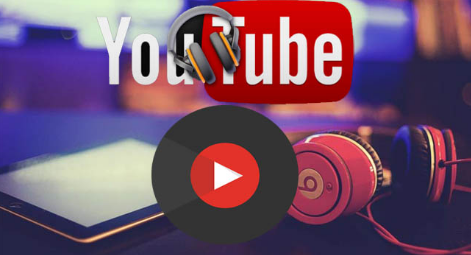
A great soundtrack can make or even break a movie.
Exactly the same holds true for your own YouTube videos. The right song might help convey emotion or include humor. However, you can’t simply pluck a song out of your iTunes library. Using a song a person don’t own the privileges to can leave your video looking a lot more like a silent film. YouTube’s Sound ID technology automatically tests and detects copyrighted tunes inside videos and, based on who owns the privileges, disables the audio or even serves additional advertising about the video that is repaid to the rights owner.
So where does which leave the budding filmmaker? For many, jumping through the report companies’ hoops of obtaining rights isn’t realistic, specifically for a video of your kid’s party. YouTube’s enforcement means torrents are no more the answer, and independent artists are searching for new ways to obtain work heard.
Consequently, a number of options have sprang up for users seeking to integrate original music to their memes-to-be. Here's a look at those hateful pounds.
1. Creative Commons Permit
If “all rights reserved” may be the last thing you need to see when deciding which music to make use of, then Creative Commons is really a beacon of light. The non-profit organization from the same name is made to let artists share their use the public with the actual creator maintaining certain privileges. This includes pictures through individuals on sites such as Flickr, content from Wikipedia, as well as, of course, audio monitors.
Not all Creative Commons permit are equal. Artists can select from four categories. The very first, “attribution” (denoted as “by”), lets anyone share the job, provided they credit the actual creator. The “share alike” (sa) choice lets others use your projects, allowing they provide exactly the same license for others to make use of the derivative works. “No derivative works” (nd) dictates the actual song can only supply verbatim. “Non-commercial” (nc) restricts songs to make use of in private videos, meaning companies or users seeking to profit from advertising are from luck.
Finding free Innovative Commons audio is fairly simple. Some individual designers have created sites, such as
Incompetech. com and
Danodongs. com to talk about their work, though every appreciate donations. If their styles don’t meet your requirements, you can search websites like
Jamendo, which boasts greater than a quarter of a zillion tracks. Each song clearly lists the kind of Creative Commons license permitted.
2. Stock Audio
Stock audio libraries work the same as stock photo libraries, letting you license music for a specific application. But just such as stock photos, the license is susceptible to a lengthy legal contract restricting use. That stated, costs are reasonable along with sites like
iStockphoto providing music rights from $3. 60 to $95 with respect to the license selected and kind of payment plan you select. This may be your best option if you’re considering well-known traditional works from famous composers or even versatile sound loops.
3. Pay-Per-Use
If you’re following a very specific sound, a far more traditional pay-per-use license might be your best bet. In contrast to the stock and innovative commons options, most from the options are from expert, though not well-known, designers. Along with that will come higher prices. The costs depend largely how specific your needs tend to be, so if you require a specific song, expect to pay for more.
The
RumbleFish Music Licensing Store offers a multitude of styles, with pricing similarly diverse. While the price is actually contingent on factors such as the type and duration useful, single songs can vary from $5 for use inside a video blog to a lot more than $6, 300 for lifetime use like a recurring theme in a good advertisement video series. While that seems like a lot, keep in mind RumbleFish stipulates the license will work for all galaxies, which needs to be worth a few thousand a minimum of.
If you’re fine along with “in the style of” a specific artist, RumbleFish’s other website,
Friendly Music, offers an excellent option at just $1. 99 for each track. Songs are listed by genre, keyword, as well as moods, like angry or even optimistic. Independent artists can upload their work with a 50/50 profit reveal.
For videos longer than just a few minutes, or to possess a common theme across multiple videos inside a series, there’s Primary Components. Users can download complete CDs of royalty-free tracks that share a typical musical style. License options vary from $19 to $189 based on whether the songs is going to be used for commercial purposes and when you plan to credit the web site.
4. Public Domain
Copyrights don’t final forever, but that doesn’t mean you’re permitted to use recordings of the actual classics. While copyright safety expires 70 years following an artist’s death, which only covers the make up. Mozart died well prior to 1940, but that doesn’t mean you should use a recording of the “Magic Flute” in the New York Philharmonic.
Which means it’s time to pull out the piano and make your personal recording. And if you auto-tune your version from the original, you can even file a brand new copyright for it.
Have you used these ways to add the soundtrack to YouTube movies? What other resources perhaps you have used?

























